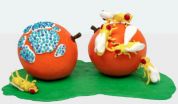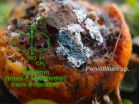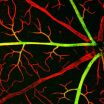(Press-News.org) Mice living in the high-altitude, oxygen-starved environment of the Andean mountains survive those harsh conditions by fueling their muscles with carbohydrates. The findings, reported online on December 6 in Current Biology, a Cell Press publication, provide the first compelling evidence of a clear difference in energy metabolism between high- and low-altitude native mammals.
"The high-altitude mice we examined in this study are a rare exception to a general exercise fuel use pattern seen in lowland mammals," said Marie-Pierre Schippers of McMaster University. "Studying exceptions to a rule is often the key to uncovering the mechanisms of a physiological process."
The new study conducted with collaborators from the Universidad Peruana Cayetano Heredia in Peru could therefore lead to increased understanding not only of mountain-dwelling mice but also of other mammals, including humans, said Grant McClelland, also of McMaster University.
At an altitude of roughly 4,000 meters, every breath of air contains about 40 percent less oxygen than it would at sea level. Under those conditions, carbohydrates are the logical energy source. That's because carbs can supply 15 percent more energy for the same amount of oxygen in comparison to fats.
In fact, the idea that high-altitude environments should favor carbohydrate metabolism was proposed almost 30 years ago, but it hadn't really been put to the test. In the new study, the researchers used a powerful multispecies approach, using four native species of mice, two from the Peruvian Andes and two found at sea level.
The researchers found that the high-altitude mice do indeed burn more carbohydrates. Their heart muscles show greater oxidative capacity, too, both adaptations that would afford the animals the ability to remain active at altitude more successfully than their lowland relatives could.
Those differences aren't a matter of adjusting to high versus low altitude but are rather due to inherent differences in the mice that have apparently arisen more than once over the course of evolutionary time.
"This is one of 'nature's solutions' to low atmospheric oxygen," McClelland said.
"Our study shows that Andean mouse species have independently evolved a metabolic strategy that maximizes energy yield when little oxygen is available. It is possible that a similar strategy has also evolved in other high-altitude mammals, including humans."
INFORMATION:
Schippers et al.: "Increase in Carbohydrate Utilization in High-Altitude Andean Mice."
At high altitude, carbs are the fuel of choice
2012-12-06
ELSE PRESS RELEASES FROM THIS DATE:
Disgust circuit: Flies sniff out and avoid spoiled food
2012-12-06
VIDEO:
The ability to detect rotten food is so crucial for survival that even flies have a dedicated neural circuit to do just that, according to a study published on December...
Click here for more information.
The ability to detect rotten food is so crucial for survival that even flies have a dedicated neural circuit to do just that, according to a study published on December 6th in the Cell Press journal Cell. The brain circuit allows flies to avoid feeding and laying ...
Mexican paradox: While opinion surveys overestimate abortions 10-fold, abortion mortality clearly decreases
2012-12-06
This press release is available in Spanish and French. A collaborative study conducted in Mexico by researchers from the West Virginia University-Charleston (US), Universidad Popular Autónoma del Estado de Puebla (México), Universidad de Chile and the Institute of Molecular Epidemiology of the Universidad Católica de la Santísima Concepción (Chile), revealed that opinion surveys used by researchers from the Guttmacher Institute overestimated figures of induced abortion in the Federal District of Mexico (Mexico DF) up to 10-fold. The research recently published in the International ...
A direct line through the brain to avoid rotten food -- a full STOP signal for Drosophila
2012-12-06
VIDEO:
Bill Hansson and Marcus Stensmyr explain their results now published in CELL.
Click here for more information.
Consuming putrid food can be lethal as it allows bacterial pathogens to enter the digestive system. To detect signs of decay and thus allowing us and other animals to avoid such food poisoning is one of the main tasks of the sense of smell. Behavioral scientists and neurobiologists at the Max Planck Institute for Chemical Ecology in Jena, Germany, have ...
Scientists identify molecules in the ear that convert sound into brain signals
2012-12-06
LA JOLLA, CA – December 6, 2012 – For scientists who study the genetics of hearing and deafness, finding the exact genetic machinery in the inner ear that responds to sound waves and converts them into electrical impulses, the language of the brain, has been something of a holy grail.
Now this quest has come to fruition. Scientists at The Scripps Research Institute (TSRI) in La Jolla, CA, have identified a critical component of this ear-to-brain conversion—a protein called TMHS. This protein is a component of the so-called mechanotransduction channels in the ear, which ...
Flexible silicon solar-cell fabrics may soon become possible
2012-12-06
For the first time, a silicon-based optical fiber with solar-cell capabilities has been developed that has been shown to be scalable to many meters in length. The research opens the door to the possibility of weaving together solar-cell silicon wires to create flexible, curved, or twisted solar fabrics. The findings by an international team of chemists, physicists, and engineers, led by John Badding, a professor of chemistry at Penn State University, will be posted by the journal Advanced Materials in an early online edition on 6 December 2012 and will be published on a ...
Hubble sees a galaxy hit a bullseye
2012-12-06
In Hubble's image, NGC 922 clearly reveals itself not to be a normal spiral galaxy. The spiral arms are disrupted, a stream of stars extends out towards the top of the image, and a bright ring of nebulae encircles the core. Observing with NASA's Chandra X-ray Observatory reveals more chaos in the form of ultraluminous X-ray sources dotted around the galaxy.
NGC 922's current unusual form is a result of a cosmic bullseye millions of years ago. A smaller galaxy, catalogued as 2MASXI J0224301-244443, plunged right through the heart of NGC 922 and shot out the other side. ...
Biochemists trap a chaperone machine in action
2012-12-06
AMHERST, Mass. – Molecular chaperones have emerged as exciting new potential drug targets, because scientists want to learn how to stop cancer cells, for example, from using chaperones to enable their uncontrolled growth. Now a team of biochemists at the University of Massachusetts Amherst led by Lila Gierasch have deciphered key steps in the mechanism of the Hsp70 molecular machine by "trapping" this chaperone in action, providing a dynamic snapshot of its mechanism.
She and colleagues describe this work in the current issue of Cell. Gierasch's research on Hsp70 chaperones ...
Image of the Carina Nebula marks inauguration of VLT Survey Telescope
2012-12-06
The latest telescope at ESO's Paranal Observatory in Chile -- the VLT Survey Telescope (VST) -- was inaugurated today at the Italian National Institute for Astrophysics (INAF) Observatory of Capodimonte, in Naples, Italy. The ceremony was attended by the Mayor of Naples, Luigi De Magistris, the INAF President, Giovanni Bignami, the ESO representatives Bruno Leibundgut and Roberto Tamai, and the main promoter of the telescope, Massimo Capaccioli of the University of Naples Federico II and INAF.
The VST is a state-of-the-art 2.6-metre telescope, with the huge 268-megapixel ...
Research on blood vessel proteins holds promise for controlling 'blood-brain barrier'
2012-12-06
Working with mice, Johns Hopkins researchers have shed light on the activity of a protein pair found in cells that form the walls of blood vessels in the brain and retina, experiments that could lead to therapeutic control of the blood-brain barrier and of blood vessel growth in the eye.
Their work reveals a dual role for the protein pair, called Norrin/Frizzled-4, in managing the blood vessel network that serves the brain and retina. The first job of the protein pair's signaling is to form the network's proper 3-D architecture in the retina during fetal development. ...
Immune system kill switch could be target for chemotherapy and infection recovery
2012-12-06
Researchers have discovered an immune system 'kill switch' that destroys blood stem cells when the body is under severe stress, such as that induced by chemotherapy and systemic infections.
The discovery could have implications for protecting the blood system during chemotherapy or in diseases associated with overwhelming infection, such as sepsis.
The kill switch is triggered when internal immune cell signals that protect the body from infection go haywire. Dr Seth Masters, Dr Motti Gerlic, Dr Benjamin Kile and Dr Ben Croker from the Walter and Eliza Hall Institute ...







